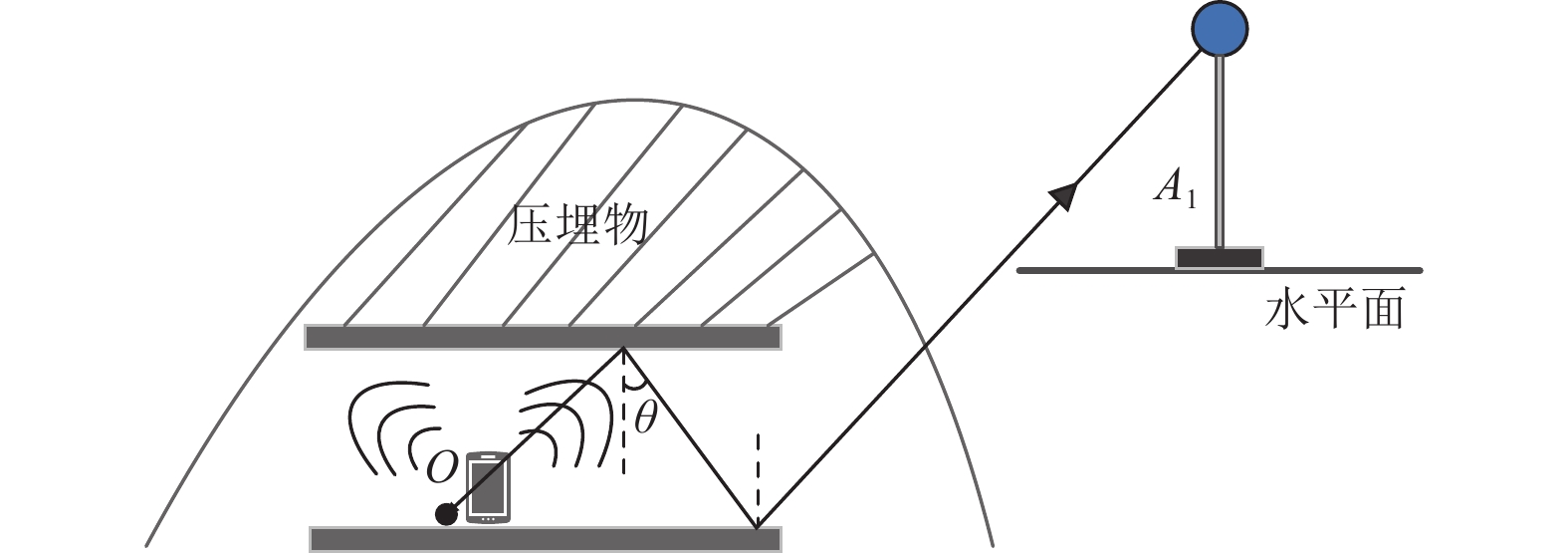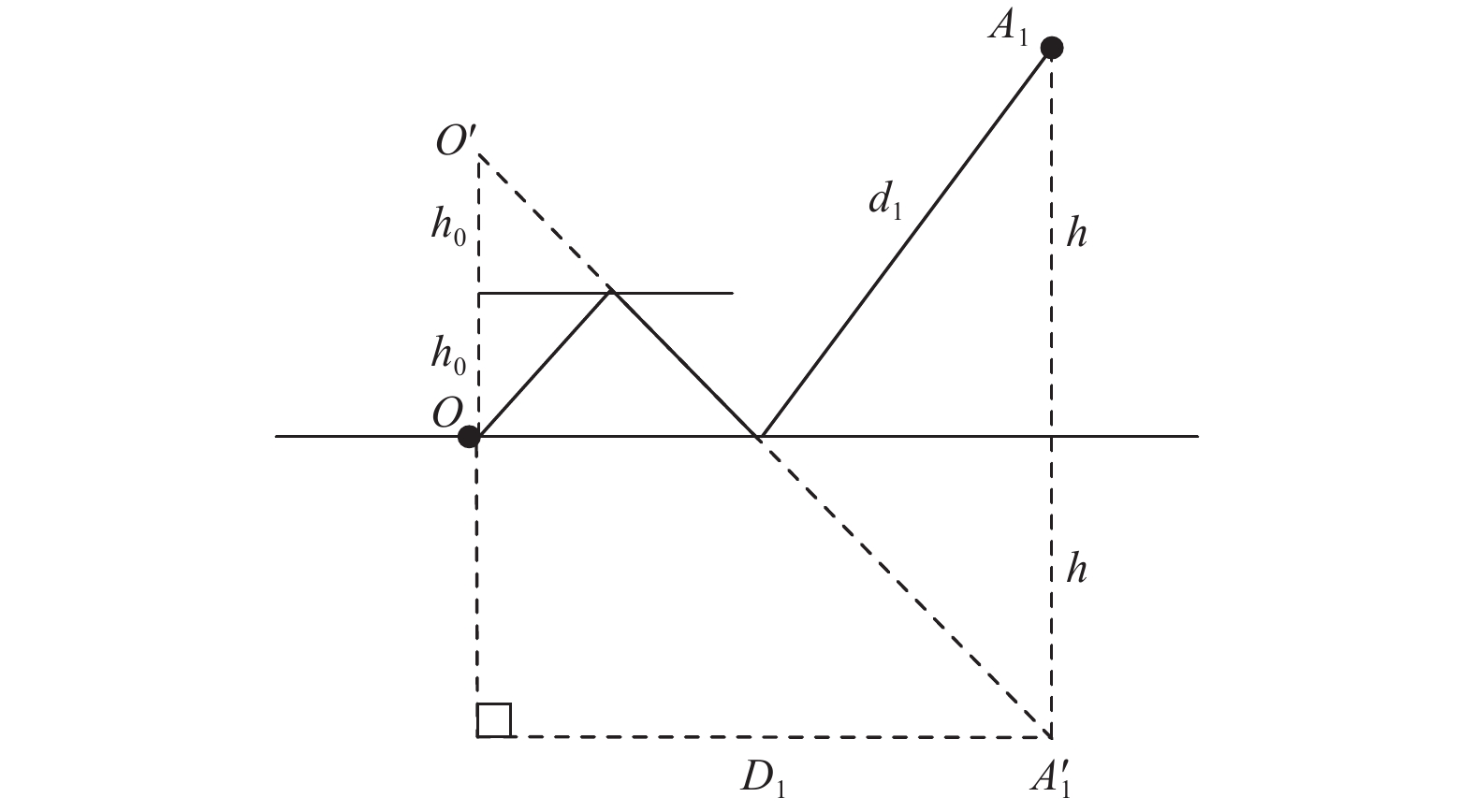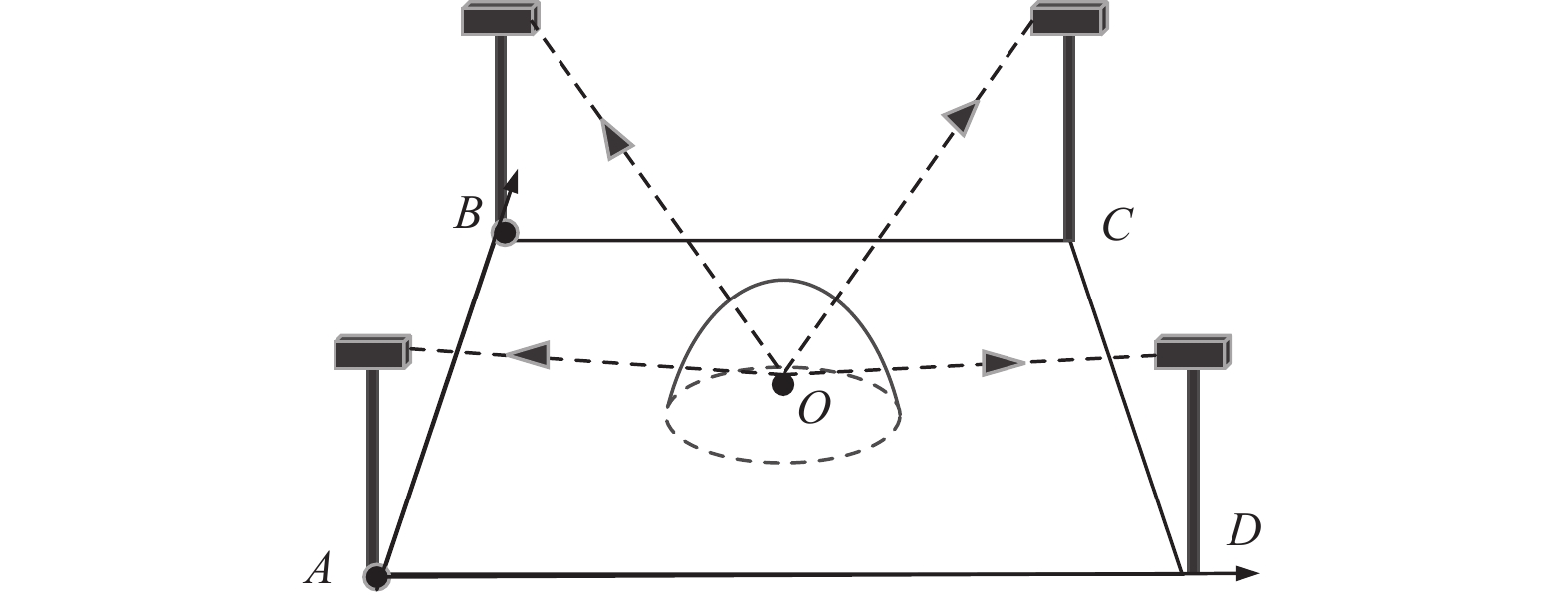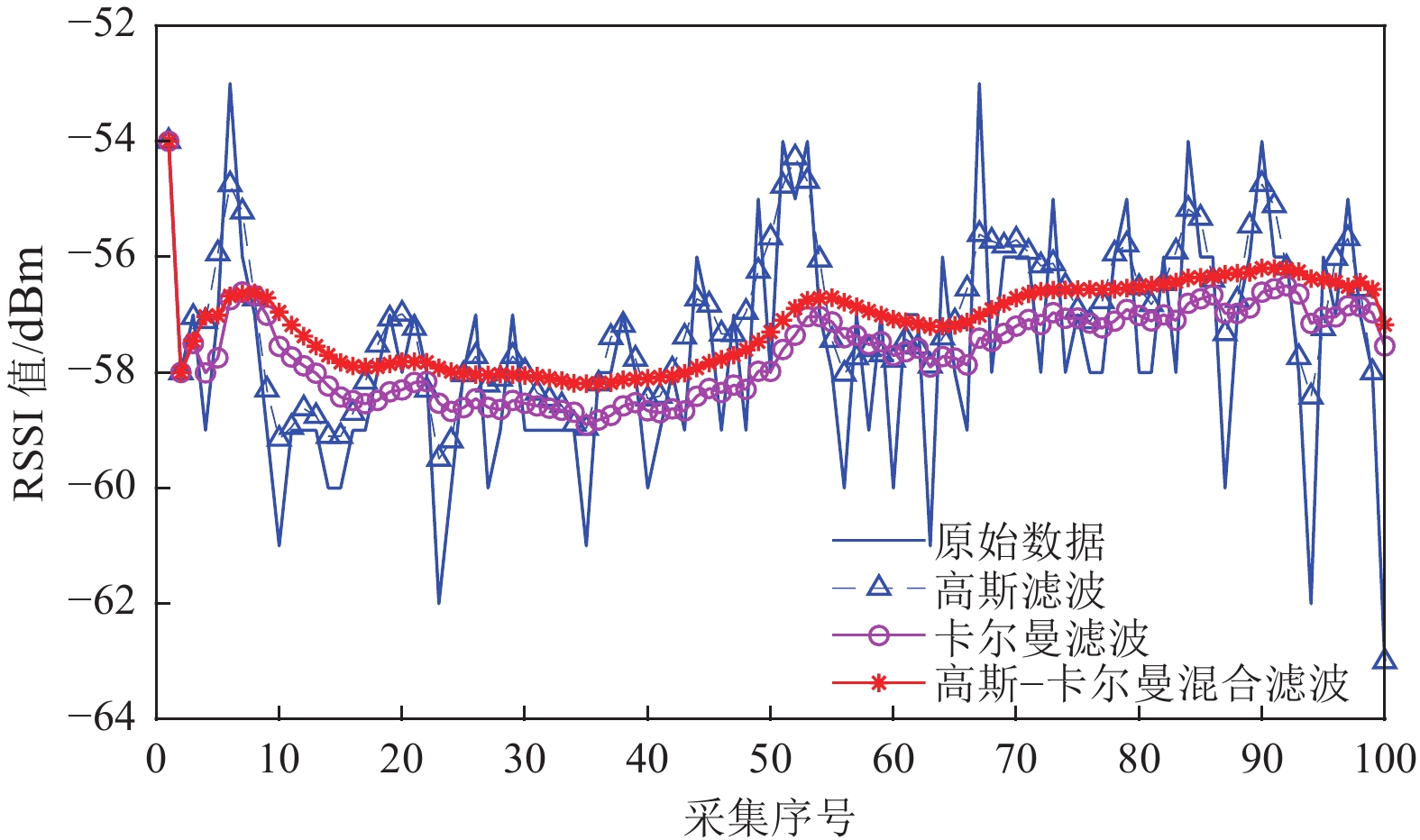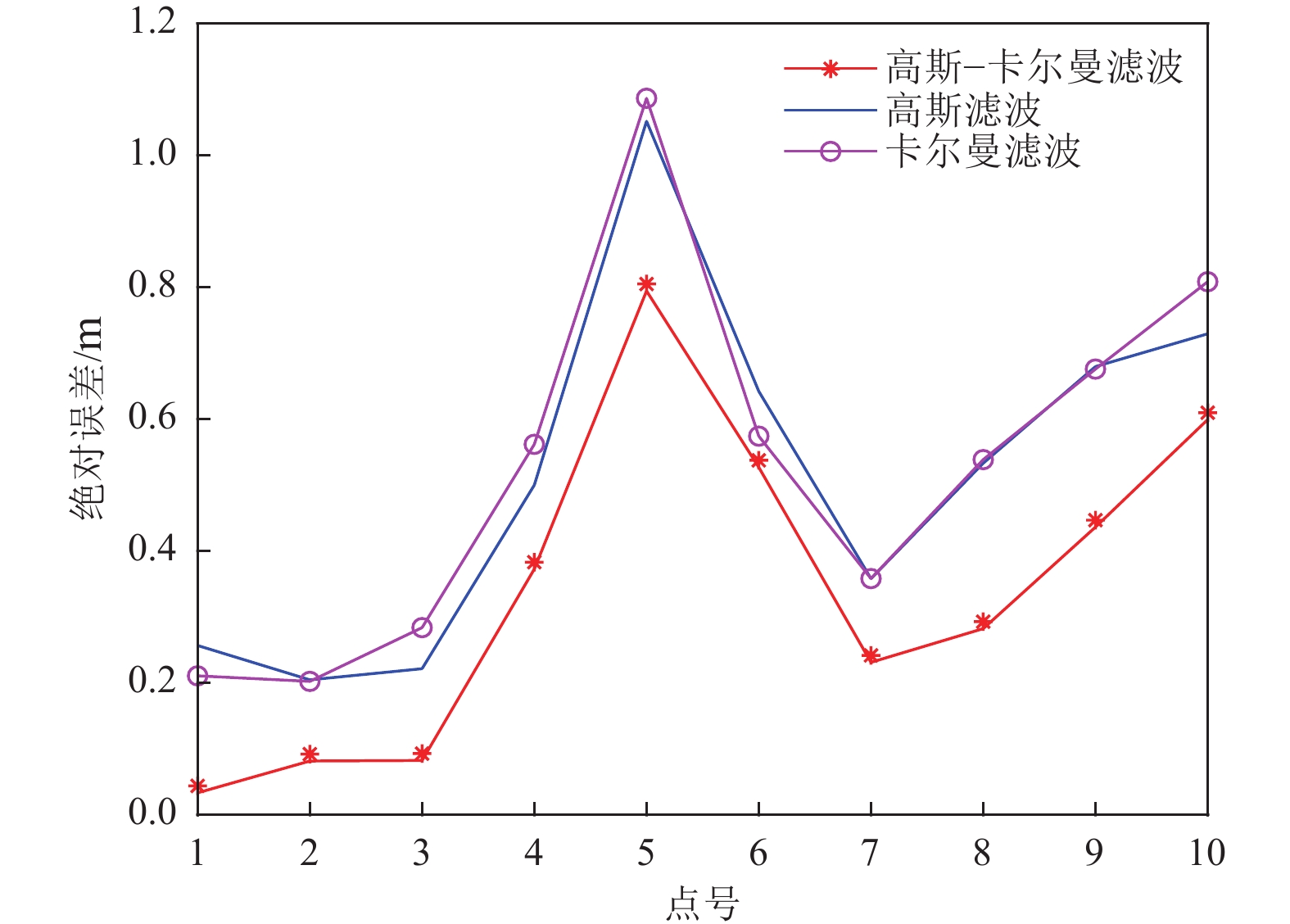Algorithm of Accurate Location of Buried Personnel in Special Environment after Earthquake
-
摘要: 针对目前对震后压埋人员定位精度较低、探测设备成本高且易受环境影响等不足,提出适用于压埋环境特性的压埋人员手机WiFi定位方法,通过衰减因子模型对WiFi探针获取的RSSI数据进行距离解算,结合简化压埋环境内部信号传输方式,采用高斯-卡尔曼滤波对获取的RSSI数据进行处理,通过模型测定的距离,利用改进附有参数的加权最小二乘平差方法,结合粒子群优化算法,最终得到压埋人员手机平面坐标位置。研究结果表明,该方法具有较高精度,在10 m×10 m范围内其平面坐标定位误差在0.3 m左右,可为震后压埋人员应急救援提供辅助决策。Abstract: In view of the current shortcomings of the positioning accuracy of the buried people after the earthquake, the high cost of the detection equipment and the vulnerability to environmental impact, in this paper we propose a WiFi Positioning Method to search for the buried people's mobile phones, which is suitable for the characteristics of the signals from buried environment. The RSSI data obtained by the WiFi probe is calculated by the attenuation factor model. Combined with the simplified internal signal transmission mode of the buried environment, the obtained RSSI data is processed by Gauss Kalman filter. Through the distance measured by the model, using the improved weighted least square adjustment method with parameters, combined with particle swarm optimization algorithm, it is capab le to obtain the plane coordinate position of the buried personnel's mobile phone.The experimental results show that this method has high accuracy, with the average error of plane coordinate positioning about 0.3 m within the range of 10 m × 10 m, which can provide auxiliary decision-making for emergency rescue of buried personnel after earthquake.
-
表 1 模拟压埋环境下平面坐标定位结果(单位:米)
Table 1. Results of plane positioning in simulated buried environment(Unit:m)
点号 方案1 方案2 定位结果 测距中误差 定位误差 定位结果 测距中误差 定位误差 真实位置 P1 (4.86,1.79) 1.63 3.21 (5.18,4.86) 0.25 0.23 (5,5) P2 (5.21,0.58) 2.3 3.51 (6.14,4.21) 0.32 0.25 (6,4) P3 (5.42,4.37) 2.8 1.73 (6.28,5.84) 0.54 0.32 (6,6) P4 (3.80,3.42) 2.5 2.59 (4.51,5.86) 0.43 0.53 (4,6) -
柴伦尚,2014. 基于灾害现场定位搜救技术的无线信道研究. 杭州:浙江大学.Chai L. S., 2014. Research of radio channel based on a localization rescue system in disasters. Hangzhou:Zhejiang University. (in Chinese) 陈国良,张言哲,汪云甲等. 2015. WiFi-PDR室内组合定位的无迹卡尔曼滤波算法. 测绘学报, 44 (12):1314−1321Chen G. L., Zhang Y. Z., Wang Y. J., et al. 2015. Unscented Kalman filter algorithm for WiFi-PDR integrated indoor positioning. Acta Geodaetica et Cartographica Sinica, 44 (12): 1314−1321. (in Chinese) 陈群,高星伟,郭杭等. 2012. ZigBee网络中RSSI的测距模型分析. 测绘科学, 37(5):38−39, 75.Chen Q., Gao X. W., Guo H., et al. 2012. Analysis of RSSI ranging model at ZigBee network. Science of Surveying and Mapping, 37(5): 38−39, 75. (in Chinese) 陈雪纯,张入千,王立新. 2018. 基于Wi-Fi信号强度衰减模型的地震埋压人员定位方法研究. 华南地震, 38(4):10−16.Chen X. C., Zhang R. Q., Wang L. X. 2018. Research on positioning method of earthquake buried personnel based on signal strength attenuation model of wireless network. South China Journal of Seismology, 38(4): 10−16. (in Chinese) 何成文,袁运斌,潭冰峰. 2021. 一种基于UWB TDOA定位模式的迭代最小二乘算法. 大地测量与地球动力学, 41(8):806−809.He C. W., Yuan Y. B., Tan B. F. 2021. An iterative least squares algorithm based on UWB TDOA positioning model. Journal of Geodesy and Geodynamics, 41(8): 806−809. (in Chinese) 胡洋,田忠,伍习光等. 2018. 基于RSSI的无源信号定位算法研究. 自动化仪表,39(6):31−34.Hu Y., Tian Z., Wu X. G., et al. 2018. Study on the passive signal positioning algorithm based on RSSI. Process Automation Instrumentation, 39(6): 31−34. (in Chinese) 景裕,曹育森,朱明明等. 2021. 非接触式生命探测技术研究现状与发展. 中国医疗设备,36(1):1−4.Jing Y., Cao Y. S., Zhu M. M., et al. 2021. Research status and development of non-contact life detection technology. China Medical Devices, 36(1): 1−4. (in Chinese) 李惠芬,蒋向前,李柱. 2004. 高斯滤波稳健性能的研究与改进. 仪器仪表学报,25(5):633−637.Li H. F., Jiang X. Q., Li Z. 2004. Study and improvement of robust performance of Gaussian filtering. Chinese Journal of Scientific Instrument, 25(5): 633−637. (in Chinese) 李亦纲,张媛,李志伟. 2010. 地震现场倒塌建筑物的搜救策略研究. 震灾防御技术,5(4):477−483.Li Y. G., Zhang Y., Li Z. W. 2010. Research of search and rescue plan for collapsed buildings on earthquake disaster site. Technology for Earthquake Disaster Prevention, 5(4): 477−483. (in Chinese) 李桢,黄劲松,2016. 基于RSSI抗差滤波的WiFi定位. 武汉大学学报·信息科学版,41(3):361−366.Li Z., Huang J. S. 2016. WiFi positioning using robust filtering with RSSI. Geomatics and Information Science of Wuhan University, 41(3): 361−366. (in Chinese) 刘晶晶,宁宝坤,吕瑞瑞等,2017. 震后典型建筑物倒塌分类及救援特点分析. 震灾防御技术,12(1):220−229.Liu J. J., Ning B. K., Lv R. R., et al. 2017. Classification of typical building collapse and analysis of rescue characteristics after the earthquake. Technology for Earthquake Disaster Prevention, 12(1): 220−229. (in Chinese) 罗尚,肖东升,2020. 一种面向震后压埋人员的RSSI快速定位算法. 测绘科学,45(6):142−149.Luo S., Xiao D. S. 2020. An RSSI fast localization algorithm for buried personnel after earthquake. Science of Surveying and Mapping, 45(6): 142−149. (in Chinese) 裴凌,刘东辉,钱久超,2017. 室内定位技术与应用综述. 导航定位与授时,4(3):1−10.Pei L., Liu D. H., Qian J. C. 2017. A survey of indoor positioning technology and application. Navigation Positioning and Timing, 4(3): 1−10. (in Chinese) 武有文,洪利,姚振静等,2017. 地震废墟环境下Wi-Fi无线信号传播模型参数测量. 震灾防御技术,12(1):210−219.Wu Y. W., Hong L., Yao Z. J., et al. 2017. Parameter measurement of Wi-Fi radio signal propagating in constrction ruins by earthquake. Technology for Earthquake Disaster Prevention, 12(1): 210−219. (in Chinese) 肖东升,钟祖峰,2021. 基于人类动力学的地震压埋人员先验在室率研究. 灾害学,36(1):54−59.Xiao D. S., Zhong Z. F. 2021. Research on indoor rate of the earthquake buried personnel based on human dynamics. Journal of Catastrophology, 36(1): 54−59. (in Chinese) 赵大龙,白凤山,董思宇等,2015. 一种基于卡尔曼和线性插值滤波的改进三角质心定位算法. 传感技术学报,28(7):1086−1090.Zhao D. L., Bai F. S., Dong S. Y., et al. 2015. An improved triangle centroid location algorithm based on Kalman filtering and linear interpolation. Chinese Journal of Sensors and Actuators, 28(7): 1086−1090. (in Chinese) Ahn S., Lee G., Han D., 2018. A location estimating method of buried victims in collapsing area using Wi-Fi signals. In: Proceedings of the 2nd International Conference on Vision, Image and Signal Processing. Las Vegas: ACM, 49. Bouet M., Pujolle G. 2009. L-VIRT: range-free 3-D localization of RFID tags based on topological constraints. Computer Communications, 32(13−14): 1485−1494. Burian A., Kuosmanen P. 2002. Tuning the smoothness of the recursive median filter. IEEE Transactions on Signal Processing, 50(7): 1631−1639. Choi J. S., Lee H., Elmasri R., et al., 2009. Localization systems using passive UHF RFID. In: 2009 Fifth International Joint Conference on INC, IMS and IDC. Seoul: IEEE, 1727−1732. Hata M. 1980. Empirical formula for propagation loss in land mobile radio services. IEEE Transactions on Vehicular Technology, 29(3): 317−325. doi: 10.1109/T-VT.1980.23859 Joho D., Plagemann C., Burgard W., 2009. Modeling RFID signal strength and tag detection for localization and mapping. In: 2009 IEEE International Conference on Robotics and Automation. Kobe: IEEE, 3160−3165. Lima A. G. M., Menezes L. F., 2005. Motley-Keenan model adjusted to the thickness of the wall. In: SBMO/IEEE MTT-S International Conference on Microwave and Optoelectronics. Brasilia: IEEE, 180−182. Moon H., Kim C., Lee W. 2016. A UAV based 3-D positioning framework for detecting locations of buried persons in collapsed disaster area. The International Archives of the Photogrammetry Remote Sensing and Spatial Information Sciences, XLI-B8: 121−124. Pan J. J., Tang Y. Y., Pan B. C., 2007. The algorithm of fast mean filtering. In: 2007 International Conference on Wavelet Analysis and Pattern Recognition. Beijing: IEEE, 244−248. Tang S. Y., Shu X. M., Shen S. F., et al. 2014. Study of personnel positioning in large area based on pseudo base station. Procedia Engineering, 71: 481−485. -



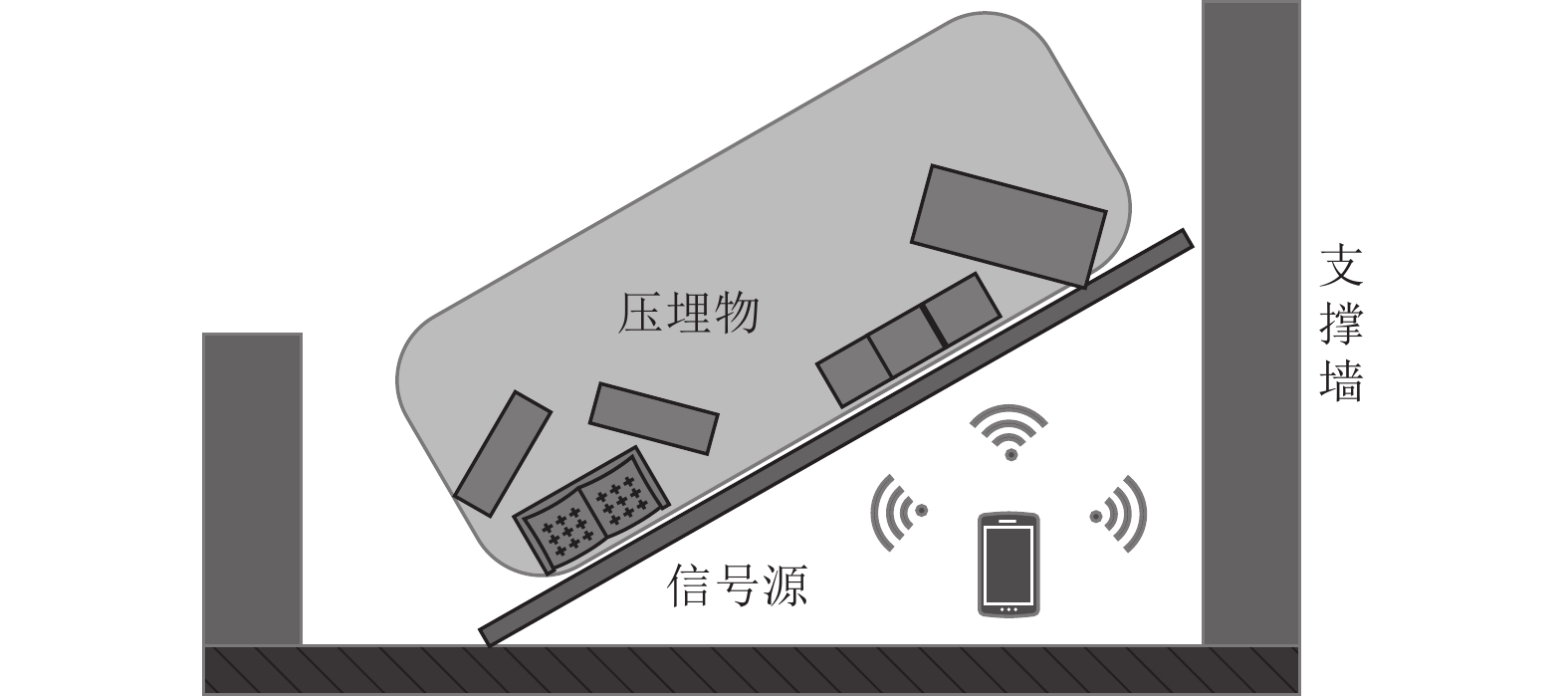
 下载:
下载:
